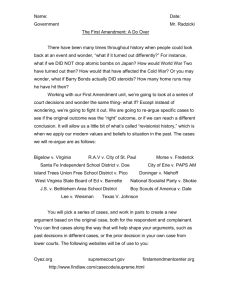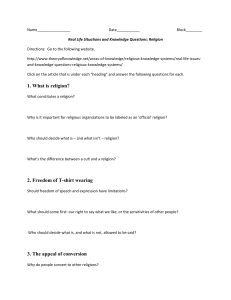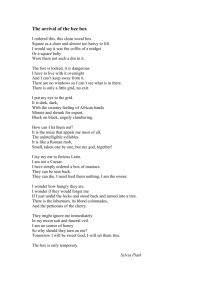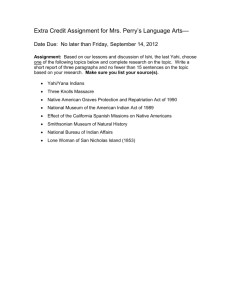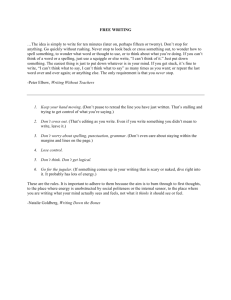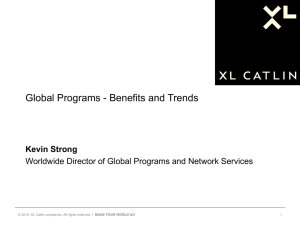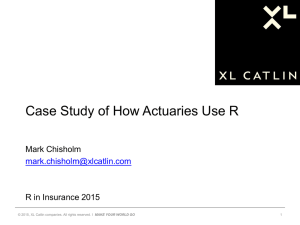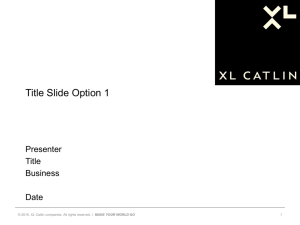Dr. Betsy's Powerpoint - 1812 Landmarks for Community
advertisement
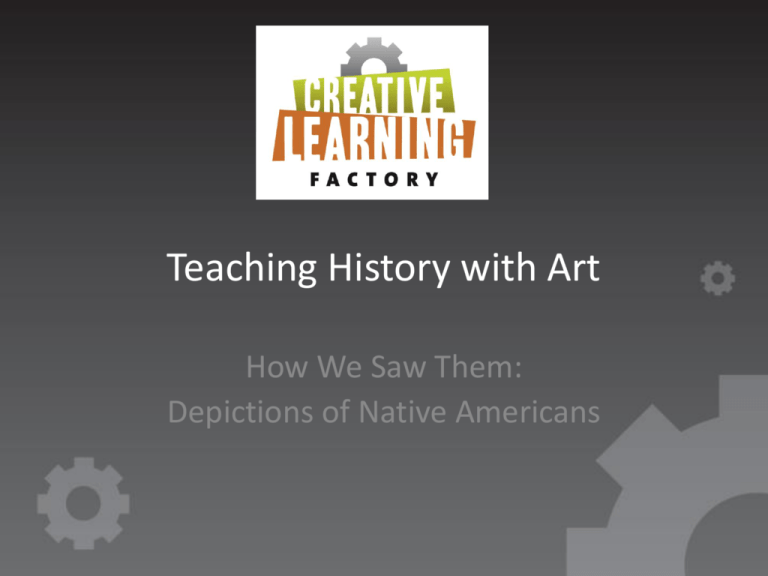
Teaching History with Art How We Saw Them: Depictions of Native Americans Teaching History with Art It’s not about the aesthetic qualities of the art As historians, we want to know what art can tell us about the time period we’re studying “Matoaka als Rebecka daughter to the mighty Prince Powhatan” from John Smith’s General History of Virginia, 1627 Objections But it’s art—it isn’t supposed to be relevant to time and place. Answer: There is no category of human expression that isn’t influenced by context. Context Context is particularly important when considering Native Americans in art Things to Consider Who or what is in the art? – Record the number of men and women, children and adults – Look for physical characteristics that distinguish age, nationality, ethnicity, religion, or race What are the people wearing? – What can their dress tell you about the time? Are the people posing, or caught in action? Things to Consider Are the people carrying/holding anything? Portrait painters often use props and settings to tell you something about the subject Images of Native Americans Remember that the artist is generally an outsider looking in Consider how artist’s bias might have influenced depiction George Catlin, Wi-jun-jon, an Assinneboin Chief. Going to Washington; Returning to his home. , Catlin’s North American Indian Portfolio, 1845. Courtesy New York Public Library. Images of Native Americans Make sure to think about whether the image is primary: for example for Tecumseh there are no contemporary images “Death of Tecumseh” Currier and Ives print, 1846. Library and Archives Canada, Acc. No. 1970-188-1431 W.H. Coverdale Collection of Canadiana Images of Native Americans New York Public Library Digital Gallery: After Columbus: 400 Years of Native-American Portraiture National Museum of the American Indian Collections *One advantage of this site is that it includes images and artifacts created by Native Americans Classroom Strategies Compare and Contrast – Seriously, do I need to explain this? Compare and Contrast From J. O. Lewis, The Aboriginal Portfolio, 1836. Courtesy of the New York Public Library Digital Gallery. Compare and Contrast Man Who Carries the Sword (Oglala Sioux), circa 1875, Courtesy, National Museum of the American Indian, Smithsonian Institution 10/9628 Charles Bodmer, Blackfoot on Horseback, from Voyage d’ans l’interieur d’Amerique du Nord, 1840-1843 Classroom Strategies 30-Second Look – Students look at the picture for 30 seconds – Turn the sheet over (or take the powerpoint slide away) – Have students write down what they saw – Turn the picture back over (or bring back the slide) – Talk about what they saw and remembered, and what they didn’t 30-Second Look The Pipe Dance and the Tomahawk Dance of the Chippeway From J. O. Lewis, The Aboriginal Portfolio, 1836. Courtesy of the New York Public Library Digital Gallery. 30-Second Look George Catlin, Buffalo Dance, Catlin’s North American Indian Portfolio, 1845. Courtesy New York Public Library. Combine Strategies First, the 30 second look Courtesy, National Museum of the American Indian, Smithsonian Institution 2/6927 Now, Compare and Contrast George Catlin, Buffalo Dance, Catlin’s North American Indian Portfolio, 1845. Courtesy New York Public Library. Earnest L. Spybuck (Absentee Shawnee), c. 1875. Courtesy, National Museum of the American Indian, Smithsonian Institution 2/6927 Other Classroom Activities Have students re-create the art in a tableau vivant Have students create original pieces inspired by a contemporary event or by historical art Another Strategy: See, Think, Wonder Can be applied to art or to any image What’s “See, Think, Wonder?” Thinking routine from Visible Thinking Visible Thinking is a flexible and systematic research-based approach to integrating the development of students' thinking with content learning across subject matters. http://pzweb.harvard.edu/vt/VisibleThinking_html_files/VisibleThinking1.html See, Think, Wonder I Think. . . I Wonder. . . • List • Concrete • Slow down! • Based on what you see • Inference • Beyond the object • Questioning Share Set Up I See. . . Share Let’s Do This! I see. . . I think. . . I wonder. . . War of 1812 We’ll go through the See, Think, Wonder process with some other items from this summer’s CD. Now, with real primary sources! I see. . . I think. . . I wonder. . . Remember: I See, I Think, I Wonder Modifying the Activity This process can be used for most types of sources – Cartoons, broadsides, artworks, etc. – Can modify slightly for text (Read, Think, Wonder) Students work from where they are Uses prior knowledge Recreating This Activity Pretty basic analysis activity – Any topic – Most any type primary sources, even objects A little more engaging than a typical analysis worksheet Questions?
